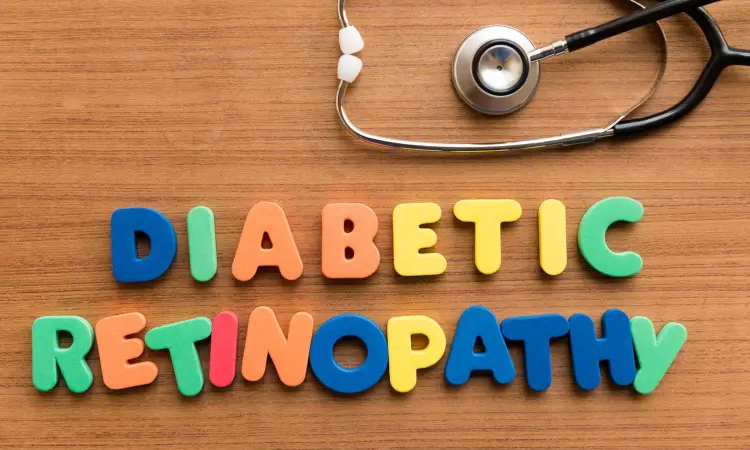- Home
- Medical news & Guidelines
- Anesthesiology
- Cardiology and CTVS
- Critical Care
- Dentistry
- Dermatology
- Diabetes and Endocrinology
- ENT
- Gastroenterology
- Medicine
- Nephrology
- Neurology
- Obstretics-Gynaecology
- Oncology
- Ophthalmology
- Orthopaedics
- Pediatrics-Neonatology
- Psychiatry
- Pulmonology
- Radiology
- Surgery
- Urology
- Laboratory Medicine
- Diet
- Nursing
- Paramedical
- Physiotherapy
- Health news
- Fact Check
- Bone Health Fact Check
- Brain Health Fact Check
- Cancer Related Fact Check
- Child Care Fact Check
- Dental and oral health fact check
- Diabetes and metabolic health fact check
- Diet and Nutrition Fact Check
- Eye and ENT Care Fact Check
- Fitness fact check
- Gut health fact check
- Heart health fact check
- Kidney health fact check
- Medical education fact check
- Men's health fact check
- Respiratory fact check
- Skin and hair care fact check
- Vaccine and Immunization fact check
- Women's health fact check
- AYUSH
- State News
- Andaman and Nicobar Islands
- Andhra Pradesh
- Arunachal Pradesh
- Assam
- Bihar
- Chandigarh
- Chattisgarh
- Dadra and Nagar Haveli
- Daman and Diu
- Delhi
- Goa
- Gujarat
- Haryana
- Himachal Pradesh
- Jammu & Kashmir
- Jharkhand
- Karnataka
- Kerala
- Ladakh
- Lakshadweep
- Madhya Pradesh
- Maharashtra
- Manipur
- Meghalaya
- Mizoram
- Nagaland
- Odisha
- Puducherry
- Punjab
- Rajasthan
- Sikkim
- Tamil Nadu
- Telangana
- Tripura
- Uttar Pradesh
- Uttrakhand
- West Bengal
- Medical Education
- Industry
TD2 patients with diabetic nephropathy have high risk of retinopathy

A new study published in BMC Endocrine Disorders suggests that people with type 2 diabetes mellitus (DM) and diabetic nephropathy (DN) have a relatively high prevalence of diabetic retinopathy (DR).
Diabetic retinopathy (DR) is one of the most common microvascular complications of DM and the leading cause of preventable blindness in working-age people. Several studies have shown an association between DR and diabetic nephropathy in DM patients, as all belong to the microvascular complications of DM. Therefore, this study was conducted by Yujie Yan and his team to investigate the characteristics of retinal microvascular changes and their risk factors in patients with diabetic nephropathy (DN).
A retrospective observational study was conducted. 145 patients with type 2 diabetes and DN participated in the study. Demographic and clinical parameters were determined from medical records. The presence of diabetic retinopathy, hard exudate (HE), and diabetic macular edema (DME) was assessed using color fundus imaging, optical coherence tomography (OCT), and fluorescence angiography (FFA) .
The main results of this study are:
1. Among type 2 DM patients with DN, DR accounted for 61.4%, of which 23.6% had proliferative diabetic retinopathy (PDR) and 35.7% had sight-threatening DR.
2. The DR group had significantly higher scores for low-density lipoprotein cholesterol (LDL-C) (p =0.004), HbA1c (P =0.037), urinary albumin creatine ratio (ACR) (p <0.001), estimated thread Low degree of spherical filtration rate (eGFR) (P=0.013).
3. Logistic regression analysis showed that DR was significantly associated with ACR stage (p = 0.011).
4. ACR stage 3 subjects experienced DR more frequently than ACR stage 1 subjects.
5. HE and DME in 138 eyes of 138 patients were analyzed, of which 23.2% had posterior pole HE and 9.4% had DME.
6. Visual acuity in the HE group was worse than in the non-HE group.
7. There were significant differences in LDL-C cholesterol, total cholesterol (CHOL), and ACR between HE and non-HE groups.
In summary, patients with DN require more timely and frequent ophthalmologic examinations.
Reference:
Yan, Y., Yu, L., Sun, C., Zhao, H., Zhang, H., & Wang, Z. (2023). Retinal microvascular changes in diabetic patients with diabetic nephropathy. In BMC Endocrine Disorders (Vol. 23, Issue 1). Springer Science and Business Media LLC. https://doi.org/10.1186/s12902-022-01250-w
Neuroscience Masters graduate
Jacinthlyn Sylvia, a Neuroscience Master's graduate from Chennai has worked extensively in deciphering the neurobiology of cognition and motor control in aging. She also has spread-out exposure to Neurosurgery from her Bachelor’s. She is currently involved in active Neuro-Oncology research. She is an upcoming neuroscientist with a fiery passion for writing. Her news cover at Medical Dialogues feature recent discoveries and updates from the healthcare and biomedical research fields. She can be reached at editorial@medicaldialogues.in
Dr Kamal Kant Kohli-MBBS, DTCD- a chest specialist with more than 30 years of practice and a flair for writing clinical articles, Dr Kamal Kant Kohli joined Medical Dialogues as a Chief Editor of Medical News. Besides writing articles, as an editor, he proofreads and verifies all the medical content published on Medical Dialogues including those coming from journals, studies,medical conferences,guidelines etc. Email: drkohli@medicaldialogues.in. Contact no. 011-43720751


